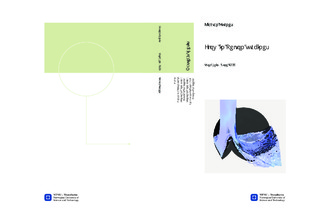| dc.description.abstract | The flow in Pelton turbines is subsonic, turbulent, multiphase (water, air, and water vapor from cavitation), has high speeds, sharp gradients, free surface and dynamic boundary conditions. A static grid is unsuitable for modeling this mainly due to the turbine wheel and the liquid having a non-stationary relative motion.In recent times, significant progress in CFD simulation has been made, which also is relevant for Pelton turbines.Nevertheless, it is still common to perform costly model tests to test the design of Pelton turbines. There is therefore a need to develop and implement numerical methods that allow for more realistic simulation of flows in a Pelton turbine.In this thesis a meshfree numerical method has been studied, to investigate whether this method can be used to provide a better and more realistic simulation of flows in a Pelton turbine.Smoothed particle hydrodynamics (SPH) is a meshfree numerical method, and has in recent year?s undergone considerable development. The advantage of SPH is that the method is not bound to a lattice and can better manage the free surface of a liquid motion. It uses discrete particles of fixed mass to describe fluid properties, where each particle represents mass and volume. SPH method approximates a function f(x), using a smoothing function W and interpolating between the particles i and j, where the smoothing length h determines the resolution and the number of neighbors that contribute to the properties at a point. There are a number of different interpolation functions.The purpose of this study was to investigate and assess whether the SPH based program DualSPHysics can be a good approach for simulating flows in Pelton turbines.In this paper two test cases relevant for Pelton turbine simulations were performed, a water jet impinging normally on a fixed plate and a simple Pelton bucket geometry. The results were compared with analytical and experimental data. Comparison showed a partially good correlation between the real world and DualSPHysics. In summary, DualSPHysics and SPH emerge as a promising tool in CFD, but this thesis shows that there is some uncertainty concerning the accuracy of the program. | nb_NO |

